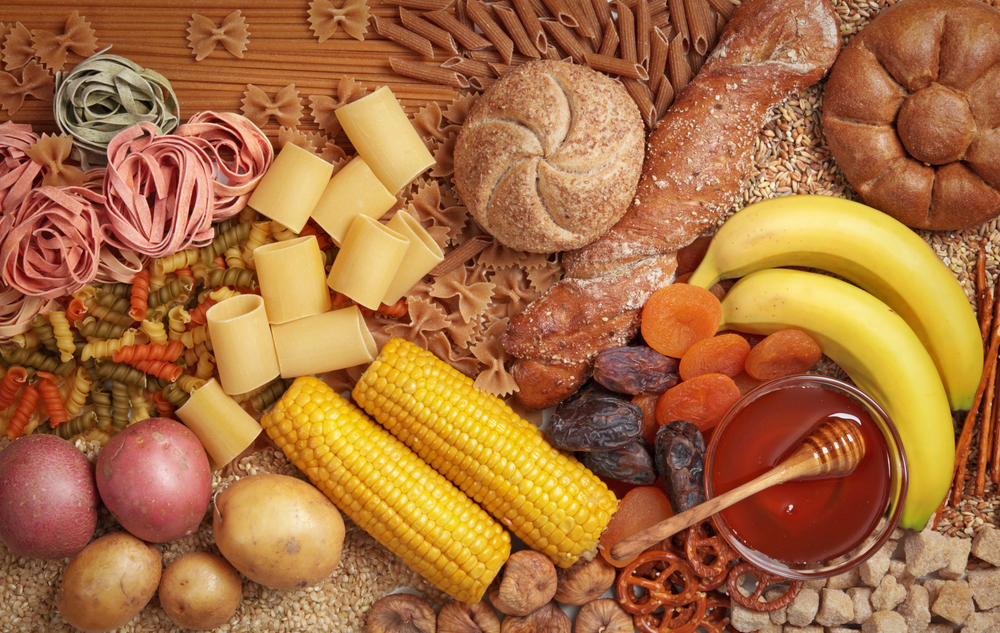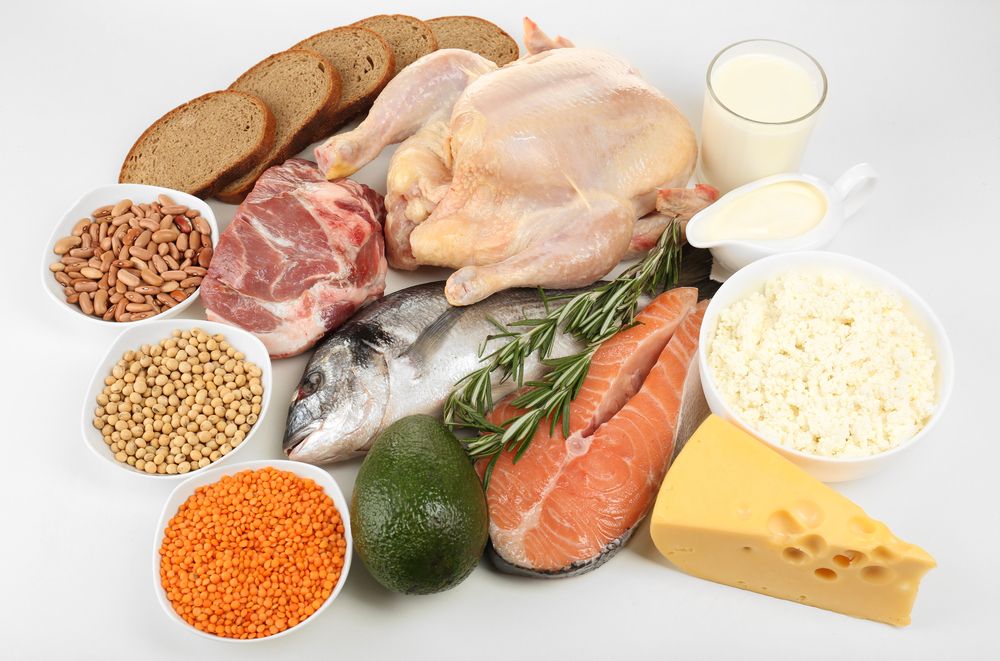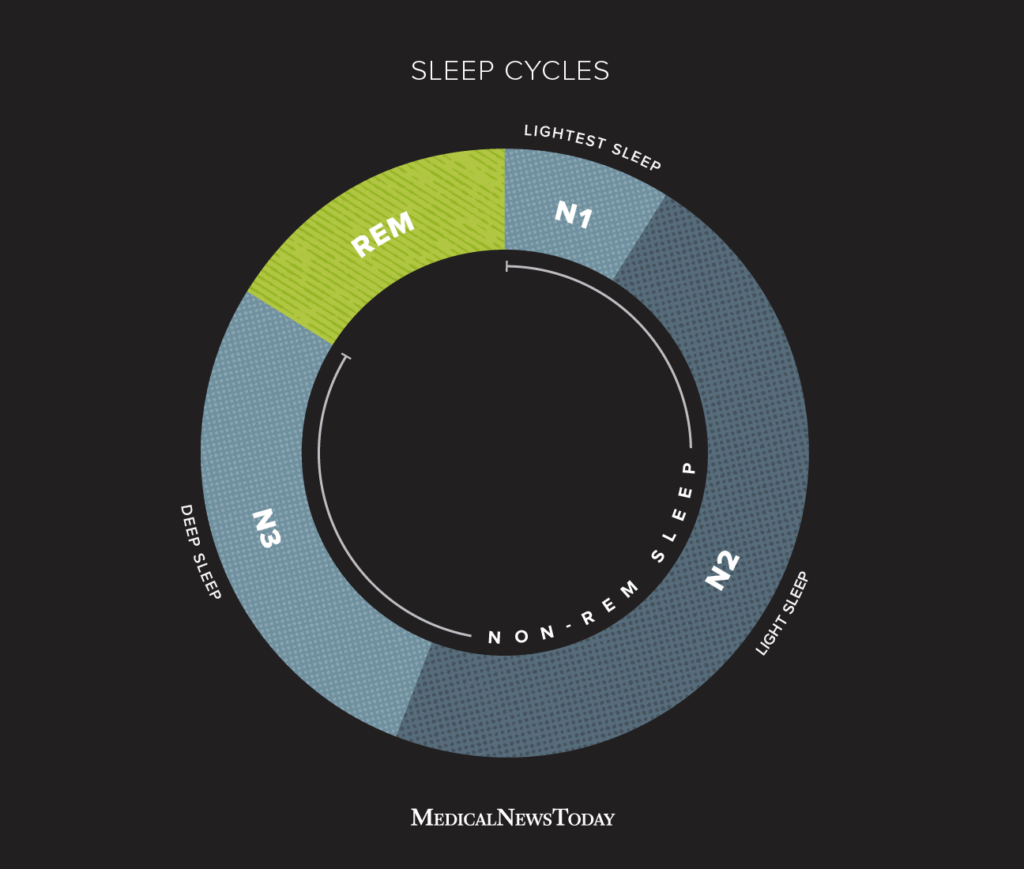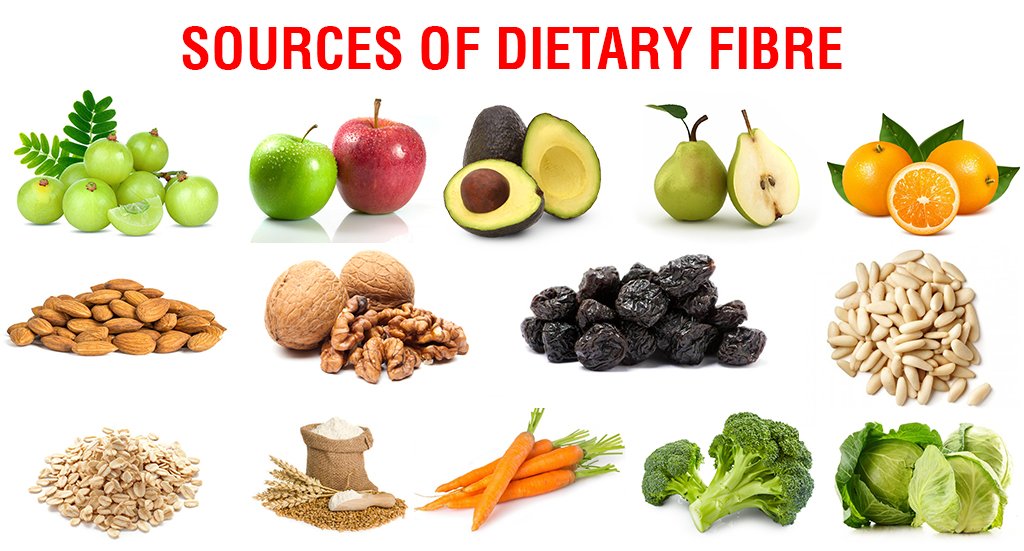Weight has been a concern for women. Today ‘Thin is in’. So, women want to look thin and slim. The Thin Ideal is there. Thinness is what women want. This has come from actresses that serve as role model to women. Every woman is different. Recent research suggests that women lose weight differently than men. Women should drink few calories and get the right amount of healthy diet to lose weight. Physical activity is also very important. Choosing healthy diet (vegetables and fruits) is also helpful. Healthy diet plus physical activity is the best way to lose weight. There are various factors that can make weight loss difficult like weight loss pills, stress, hypertension, disordered sleep. Diet and exercise play a key role in weight loss for women. There are various other factors also like sleep quality, stress levels, metabolism, belly fat.
Cut Down on Carbs
 Livescience.com
Livescience.com
Carbs increase blood sugar level, and hunger. They are also related with increased body weight. One should limit refined carbs like white bread, pasta and packaged foods. One should opt for whole-grain products like oats, brown rice, and barley instead.
Resistance Training
Resistance training is helpful in building muscle and it increases endurance. It is very beneficial for women above 50. Resistance training increases the number of calories that the body burns at rest. It also saves bone mineral density to protect against osteoporosis. Resistance training includes lifting weights, using gym equipment and performing body weight exercises.
Drink more water
 Image courtesy: Usgs.gov
Image courtesy: Usgs.gov
Drinking more water is an easy and effective way for weight loss with minimal effort. According to research, drinking 500 ml of water burns calories by 30%. Studies also show that drinking water before eating food can lead to weight loss and burn calories by around 13% .
Eat more protein
 Image courtesy: Livescience.com
Image courtesy: Livescience.com
Routine foods like dairy and Pulses and legumes are important part of healthy diet especially when it comes to weight loss. A high protein diet can cut down cravings, increase feelings of fullness and increase metabolism. According to a recent research, increasing protein intake by just 15% decreases calorie intake by an average of 441 calories resulting in five kg of weight loss
Sleep cycle
 Image courtesy: Medicalnewstoday.com
Image courtesy: Medicalnewstoday.com
Research has suggested that getting enough sleep is very important to lose weight just like diet and exercise. Sleep deprivation is associated with increase body weight and higher levels of ghrelin, the hormone that is responsible for increasing hunger. Getting at least 7 hours of sleep each night increases the likelihood of weight loss by 33% for women.
Cardiovascular exercise
 Image courtesy: Youtube.com
Image courtesy: Youtube.com
Aerobic exercise also known as cardiovascular exercise increases heart rate to burn extra calories. Adding more cardiovascular exercise to the routine can result in weight loss and it becomes even better when a healthy diet is taken. For best results one should do cardiovascular exercise for at least 20 to 40 minutes per day and around 150 to 300 minutes per week.
Maintain a food journal
Maintaining a food journal to track what you are eating is a great way to hold yourself responsible for your food and make healthier choices. It also becomes easy to count calories which is an effective strategy for weight management. A food journal helps to stick to the goals and results in greater long term weight loss.
Add dietary fibre
 Image courtesy: Steadfastnutrition.com
Image courtesy: Steadfastnutrition.com
Adding more fibres or dietary fibre to the food is a common weight loss strategy. Fruits, vegetables, pulses, nuts, whole grains are all great source of dietary fibre that can be enjoyed as part of a balanced diet.
Mindful eating
Mindful eating means minimising external distractions during the meal. Try eating slowly and focusing attention on how your food tastes, smells, looks and feels. This practise is important for healthier eating habits and the powerful tool for Weight loss. Eating slow can enhance feelings of fullness and also related to significant reductions in daily calorie intake.
Set achievable goals
One should set SMART goals which make easier to attain weight loss smart goals is an abbreviation which stands for Specific, Measurable, Achievable, and Relevant and Time bound. They should hold you accountable. Setting goals lays out a plan for how to reach weight loss for example instead of simply setting a goal to lose 10 pounds, set a goal to lose 10 pounds in three months. Keep a food journal and eat more and more vegetables and fruits.
Behavioural interventions
The goal of behavioural interventions is to help people identify and modify eating and related thought patterns. Self-regulation is the key. Less energy intake and more energy output is related to self-regulation. One should do exercise and physical activity and take adequate amount of sleep. Weight loss is a matter of will power. It is also important to note that delaying gratification is the way to weight loss. Behavioural techniques and the ability of will power and delaying gratification and can increase self-efficacy.
Self-monitoring
One should keep track of food intake and physical activity. One should keep daily records of food intake which includes type, amount, and calorie intake. Gradually one should reduce it. For exercise and physical activity, one should set realistic and attainable goals. Many programs of cognitive behaviour modification use self-monitoring. The theory behind self-monitoring is that a person must understand the dimensions of a behaviour before change can be done. Self-monitoring assesses the frequency of weight loss and the causes and consequences. For weight loss one should see that whether or not he is eating or overeating. A second stage in self-monitoring is making a chart of the behaviour techniques which range from very simple charts for recording the behaviour each time it occurs to complex charts regarding the behaviour recording the circumstances under which the behaviour was there as well as the feelings that were elicited, for example, If you want to do weight loss you should keep a detailed behavioural record of all the eating events. One can record each time he ate fast food, the time of day, the situation in which it occurred, the presence of other people if any. One can also record the subjective feelings of craving that existed prior to eating the food. Although self-monitoring is usually only an initial step in behaviour change, it can itself produce behaviour change i.e. weight loss. Simply attending to your own overeating may lead people to eat less. Typically however behaviour change that is produced by self-monitoring is short lived and needs to be paired with other techniques
Self-control of behaviour
Cognitive behaviour therapy has increasingly moved towards self-control of behaviour. In this approach, the individual who is the target of the intervention acts as his or her own therapist and together with a psychologist learns to control the factors and consequences of the target behaviour that is weight loss to be modified.
Self-reinforcement
Positive self-reward involves rewarding oneself with something good after a modification of a target behaviour that is less eating. An example of positive self-reward or self-reinforcement can be going to a movie after weight loss. Negative self-reward or reinforcement involves removing an aversive factor after successful modification of the target behaviour that is less eating. In a research study, it was found that self-reward produces greater weight loss. Self-reward for habit change produces more weight loss. Overall self-reinforcement has been a useful technique in the modification of behaviour.
Contingency contracting
Self-punishment is effective only if people actually do the punishing activities. When self-punishment becomes too aversive people do not do their efforts. One form of self-punishment that works well and has been widely used is contingency contracting. In contingency contracting, an individual forms a contract with another person such as a psychologist telling him what rewards or punishments are contingent on the performance or non-performance of a behaviour. For example a person who wants to do weight loss can deposit a sum of money with a psychologist and arrange to be fined each time he or she overeats and to be rewarded each time he has done physical exercise.
Cognitive restructuring
Cognitive restructuring trains people to recognise and modify the internal monologues to promote behaviour change. For example if a person who wants to do weight loss has an urge to eat more is preceded by internal monologue that she’s weak and unable to control this craving these beliefs are targeted for change. This person would be trained to develop antecedent cognitions, for example I can do this or I’ll be healthier by doing this.
Environment modification
One must change eating habits permanently. One should increase consumption of low energy foods for example, fruits and vegetables and the consumption of energy dense foods should be reduced. One should make weight loss goals guide related to shopping choices. One should not buy tempting problem foods, eating outside the home should be less often. One should not eat fast foods. Physical activity should be increased. One should walk at least five days a week, stairs should be used, while using the phone one should stand, remote control should not be there, one should walk during the TV commercials. One should create an environment where there is self-control. One should avoid craving. One should go for a walk instead of snacking. Clear and easy goals should be set on the way to the long term goal goals, for example, I will walk 20 minutes five days a week after this is reached a new goal should be set. If you cannot reach the goal work out what’s going wrong. Guilt should be avoided.
Self-efficacy
Once you focus on success. Setbacks will happen but one should learn from.
Social support
Family is the biggest social support. Take help from family in avoiding temptation and increasing exercise. These strategies and interventions can support to make changes required. Behavioural treatments have substantial initial effectiveness. However weight regain is a problem. CBT i.e. cognitive behaviour therapies can teach patients to identify maladaptive thoughts that interfere with their behaviour goals and to replace the irrational thoughts with more rational ones. All or nothing thinking especially about weight loss is a common maladaptive thought and can be difficult to manage. Losing weight and then establishing at a lower healthier weight is a long term process but goes easy with time.
Importance of nutrition
Given the health social and environmental benefits that are there because of good nutrition and there is obvious reason for promoting such behaviours. In order to do so most effectively we should understand the factors that influence adoption and maintenance of eating behaviours and one should target intervention efforts aimed to promote healthy eating and physical activity.
Cognitive behaviour approaches to help behaviour change
Cognitive behaviour therapy can be used to change the focus to the target behaviour itself i.e. weight loss. People often have internal monologues that interfere with their ability to change their maladaptive behaviour for example a person who wishes to decrease weight me have self-doubts like I will never be able to do so. Unless these internal monologues are modified the person will be not likely to change health habit and maintain that change overtime
METHODS OF WEIGHT LOSS FOR WOMEN

Published: Nov 11, 2021